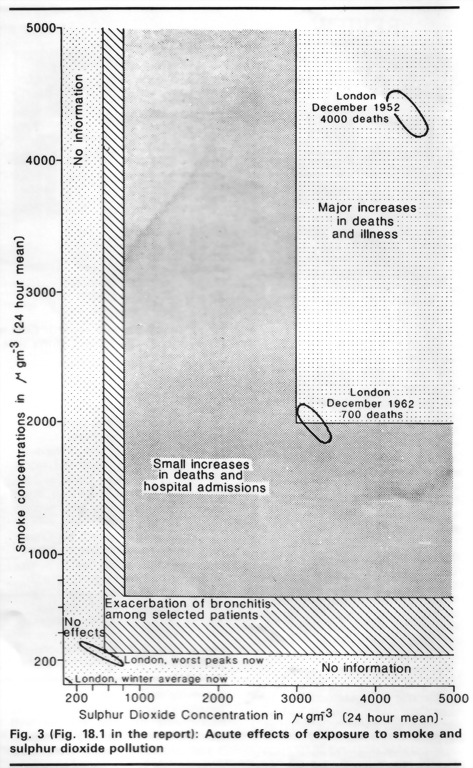#Quantitative Reasoning
Explore tagged Tumblr posts
Text
Why does the government want the UK to use more nuclear power?
— asks the BBC. The answer is straightforward enough. Surprisingly, it starts with the fact that the one new nuclear project started in the UK since the 1980s, Hinkley Point C, is also the most expensive in the world, coming in at a price per kilowatt of installed capacity about five times that of Barakah in the United Arab Emirates.
This high cost is partly due to a most unsuitable funding mechanism that was imposed, the so–called Contract for Difference. Because the CfD is the funding mechanism used for renewable energy projects in the UK (which generally have both shorter construction timetables, and shorter lifespans), a direct comparison is possible, and it is seen that the CfD price for new on–shore wind projects (the cheapest renewable energy in Britain) is rapidly rising toward the Hinkley Point C CfD price.
Nor does nuclear require the massive grid investments of distributed generation : new nuclear units can be built at the sites of coal–burning power stations, already hooked up to the National Grid, and connected in a thoroughly conventional way by the existing switchgear. No “smart grid” schemes of dubious reliability are required. The UK already possesses an uncommonly large amount of grid–scale storage, and feeding it (as designed) with the consistent output of nuclear plants rather than the fluctuating output of wind and solar only makes it work more economically.
In other words, if new nuclear in Britain could be built at even two or three times the price of Barakah, it would be far and away the cheapest non–carbon electricity available. And if the announced plans for shifting energy demand in home, transportation, and industry away from burning fuels and toward electricity are to be realized, very large increases in electricity supply will be required in the near future.
2 notes
·
View notes
Text

Source: Cracking the GRE Premium Edition with 6 Practice Tests, 2020 All the best to everyone for your upcoming exams
#GRE#GRE Math#Percentage#Decimal#Fraction#Math Equivalents#Study Tips#Memorization#GRE Prep#Friendly Fractions#Exam Strategy#GRE Quantitative#Percent-Decimal Conversion#Decimal-Fraction Conversion#Test Prep#GRE Success#Math Hacks#Quick Math#GRE Percentages#Simplified Math#Answer Elimination#Problem Solving#Test Day Tips#GRE Shortcuts#GRE Study Guide#Math Memory#Percent Conversions#Decimal Conversions#Fraction Conversions#Quantitative Reasoning
2 notes
·
View notes
Text
trying to research PhD programs but struggling bc my area of interest (the science of how children learn math) is grouped in different degree programs depending on the university (edpsych, psych, cognitive science, human development) so I end up having to look up every single faculty member across like 3 different departments for each potential university 😭
#and let me tell you not many people are researching the cognitive science behind early mathematical learning/skills#language & literacy? yes.#numeracy and quantitative reasoning? im lucky if there's ONE faculty member#phd tag 🤡#starting one now even though i dont plan to apply this cycle lol
28 notes
·
View notes
Text
"You only don't like vegetables because you've never had them prepared properly"
"You only don't like math because you've never been taught properly"
Once y'all are done insulting my mother, you might want to consider that you don't know other people's lives?
#anghraine rants#if only i had a reason for oversensitivity and struggling with quantitative reasoning#that has nothing to do with my parents or teachers#rare breed of attack unicorn
33 notes
·
View notes
Text
ok so i got an hour and a half of sleep last night between 12am and 1:30am bc im crashing into mania again (yes i called my psychiatrist and therapist) but like shout out to middle of the night me for actually writing down a sentence stuck in my head in my notes app that reads “i am my father’s daughter and my mother’s son” bc oooh i have some writing ideas with that
#- r#my mindset while writing it was trying to describe my experience growing up trans before i knew the words to describe myself#like now i have the words ‘trans man’ and ‘genderqueer’ that feel comfy#but i didn’t have those when i was a kid#and i had such a gender neutral first 9 years until i hit puberty and people forced the ‘female’ role on me#that i don’t have much dysphoric memories from a young age#i never use she/her for young me but i also don’t use he/him because the kid i was in my mind just isn’t gendered#so i use they/them for them#anyway i’m putting off studying for my quantitative reasoning test on monday#but ugh i’ll go do my homework now
5 notes
·
View notes
Text
French electricity continues to be far cleaner, as well as considerably cheaper, than German electricity.


It’s very easy to fall into the trap of seeing what one wants to see, and many people desperately want to see “cheap, clean renewable energy as the solution to climate change”. But if we really want to solve the pressing problems of the world, it is vital to see what is actually there.
There was record-breaking clean energy progress all around the world in 2024
"Last week, we shared the news that the U.S. government permanently closed most federal waters — more than 625 million acres — to offshore oil and gas drilling.
It’s a great way to kick off a year of more good climate action. And as the year-end data rolls in, there are even more stories of progress in fighting climate change via transitioning away from fossil fuels toward clean energy sources across the globe. In 2024...
📍 In Great Britain, wind power alone provided more electricity than ever before, and all renewables together generated around 56% of electricity.
📍 In Germany, renewables made up a record 59% of electricity generation and became the “backbone of the system” in the country.
📍 In Poland, a record 29% of its power came from renewable sources, showing great progress in a country that still heavily relies on coal.
📍 In India, the “transformative growth” of its renewable energy sector led to it surpassing 200 GW of installed capacity, making up 46% of the country’s total installed capacity.
→ Read more stories of progress for the planet"
-via GoodGoodGood, January 18, 2025, Source
#not a climate leader#atomic power to the people#nuclear energy is clean energy#quantitative reasoning
2K notes
·
View notes
Text
GRE today…..
#456 words#it’s optional for most things I’m applying to but. my grades are not amazing for the level I’m applying#so in my case taking the gre is a good idea if I can do really well#which#¯\_(ツ)_/¯#we will see#I did a practice test and sone practice problems and such and I do fine#but I would like a higher percentile in quantitative than my practices have projected#hopefully having practiced and being in a proper test environment will help push it up a few more points#also it’s like. 50/50 rn on whether I can finish the essay in 30 mins#ive gotten it closer each time I practice but#woof. hard to cleanly articulate a point you don’t know ahead of time in 30 mins#but yeah ideally I do well enough that I can send scores and they will help rather than harm#that’s all I ask. I could maybe take it again but would rather not have to spend another 250#we shall see#at least it’s not the time I took the mcat w only 2 weeks prep#and its also not the mcat#mcat has No fucking reason to be that long#that’s not a cognitive test or a content test it is an endurance test#I know gre used to be longer (like 4 hours?????) but. still#mcat was like 7 iirc#GRE is 2 hours which is a normal fucking amount of time for a test methinks#though ngl it’s a bitch that the hardest sections are at the end#well I guess that’s. a good sign actually????#bc iirc it modulates what you get on the last two sections based on your earlier performance#so the fact it gets harder means I’m doing well early on#but still………..#anyway I’m rambling#pre test thoughts I guess#don’t expect anyone to read this really and if you did sorry this is. probably entirely uninteresting
4 notes
·
View notes
Text

something something you need to be critical of the sex offender list
#being critical of how the government handles any of ts for many other reasons is also important#but here's some quantitative data for who theyre coming for first#txt
4 notes
·
View notes
Text
The company plans to use solar farms in places that have little to recommend them other than a railway line nearby as filling stations at which to charge heavy but cheap batteries built into goods wagons. A 100-car train… could deliver three gigawatt-hours to users.
We wouldn’t normally suspect The Economist of innumeracy. On the other hand, solar boosters are hardly above suspicion of deliberate deception, and sometimes seem to revel in self-deception.
American railroad hopper-cars, much larger than those used most other places in the world, carry typically 100 tonnes of coal each. A modern, efficient gigawatt coal-fired power station typically burns something like 300 tonnes of coal an hour. (Those numbers will vary with the thermal efficiency of the station and the quality of the coal.) Three gigawatt-hours would then require about 10 carloads. The typical unit coal train is 100 cars long, or about 30 gigawatt-hours. At that, most of the coal-burners built in the past half-century or so have been mine-mouth stations, because for distances of about 500 km or less, it’s cheaper to burn the coal at the pit-head and send the power onward by high-tension lines.
Good lead-acid batteries (presumably the “heavy but cheap” option mentioned) store about 50 watt-hours (0·05 kWh) per kilogram. At this rate, one train car could carry a freight of 5000 kWh. The whole trainload would then be 100 times that, 500 000 kWh or half a gigawatt-hour. Only if you assume an externally-imposed economics-be-damned mandate for solar-plus-storage, as in California, does this begin to make some kind of sense.
If the numbers as given simply don’t seem to accord with reality, neither does the claim that solar “only gets cheaper and cheaper”. Solar power requires land, and vast tracts of it — land which only tends to increase in price. Besides that, each additional increment of generation tends to use more land, because the land most favorable for the purpose is usually developed first. Similarly, the vast raw materials requirements call for exploiting poorer and poorer sources, at ever-escalating costs.
Compare all that with a single half-meter-long CANDU fuel bundle, containing about 30 kg of uranium, which in the course of its time in the reactor will produce more than 1 500 000 kWh. Nuclear requires only modest quantities of land and raw materials, and depends primarily upon technological skill and know-how — which, unlike land or raw materials, constantly gets cheaper.
3 notes
·
View notes
Text
Chernobyl did something amazing which most people seem incapable of realizing : it showed us that even the worst conceivable nuclear disaster wasn’t anything like as bad as we had thought.
A little background : back in 1958, the US Atomic Energy Commission published a report known as WASH-740. This was intended as a look at the worst possible consequence of a nuclear power plant accident, and so it postulated the sudden dispersal into the environment of the complete core of a 200 MW light-water reactor. This isn’t something that could actually, physically happen. But it was predicted that 3400 deaths and 43 000 injuries would result.
As it turns out, the RBMK-1000 reactor type had a unique design such that, under certain very unusual conditions, it was possible to disperse about 1/5th of the core of a 1000 MW reactor. Every other type of power reactor ever approved for civilian use is designed and constructed so that such an event is made impossible by the laws of physics ; but the Politburo wanted large reactors now, and when they were warned by the Chief Designer that the calculations weren’t complete, they thought it would be adequate to issue an operators’ manual saying “never for any reason do this”.
In other words, what happened at Chernobyl 38 years ago was beyond the worst nuclear accident that anyone thought could happen, or indeed, that could have happened anywhere else.
Now here’s the really important part. The United Nations Scientific Committee on the Effects of Atomic Radiation has made careful study of the people affected over those 38 years. Estimates of exposure, for instance, have been made for people exposed to the debris cloud, and their health has been compared to the health of unexposed populations from the same region, with the same demographics, diet, et cetera. Furthermore, the “liquidators”, a workforce of well over a hundred thousand people who were sent in to do cleanup, and received the largest allowable radiation dose before being pulled out, have been followed all that time.
The expected harms to human health have failed to appear.
Among the liquidators, for instance, it was confidently expected that, within about 10 years, a very large number of cases of leukemia would be seen, because this is the kind of cancer most likely to be caused by radiation. There should have been what epidemiologists call a large signal, a statistically unambiguous number of cases, several times larger than the number which would occur at random in an unexposed population. All these years later, we’re still waiting to see those cancers.
In face, Greenpeace and others have accused UNSCEAR of a cover-up, because the estimates of deaths and injuries keep getting revised downward in every successive report. Apparently they don’t understand how the scientific method works. Correlation does not necessarily imply causation, but the lack of correlation is very good evidence against causation.
Meanwhile, knowledge of the very real harms of fossil fuels, and of air pollution — which nuclear power plants do not produce — continues to mount.

Civil nuclear energy has never caused any event comparable to the 1952 London smog, and the evidence of Chernobyl is that it cannot.
Oh hell yeah
2K notes
·
View notes
Text
me (computer science student) asking my friend (humanities major) arithmetic problems (what’s 2^18, what’s 76-12, what’s 1207/18, etc) 🤝 my friend (aforementioned) asking me (me) how to do in text citations
#symbiotic relationship#the reason he is not in a quantitative science and i am btw. is feminism#hashtag women in stem hashtag women in cs hashtag
5 notes
·
View notes
Text
Sociological Theory and the Canon
It's Sociology Sunday! Today we're talking theory.
What is sociological theory?
Sociological theory is a set of interrelated ideas that allow for the (1) systematization of knowledge of the social world (2) the explanation of that world, and (3) predictions about the future of that world, and which are falsifiable through empirical research.
Theory provides a possible answer to questions like, “why did this happen?” or, “why did they do that?” This means theory is speculation, not fact, but unlike “ideas” generally, theory is speculation driven by a more formal, systematic, process, which incorporates the work of previous theorists and research findings.
The Sociological Canon
Some theories are more popular than others. Some theories, while unpopular, are considered “pivotal” to the foundation of sociology. The “sociological canon” helps us identify the “popular” and “pivotal” theories.
The sociological canon is defined as the theories, ideas, and texts that are widely considered as the most important in the field of sociology (Ritzer and Stepnisky 2018)

“I’m not a regular mom theory, I’m a cool mom theory!”
The canonized theories are sort of like the “cool mom” in Mean Girls (oshowing my age here, the original 😘) – others exist, but these are the ones we tend to think of first when we think of “the mom in Mean Girls” (or, in this case, “sociological theory”).
Critics of the canon argue that the canon is not a neutral construction; rather, it is affected by power and the politics of the theory. To some degree, they are right.
The field of sociology has historically privileged theories that have testable hypotheses, known as “positivist” theories, and theories produced by white men faculty. In this, we can see that the canon, and relatedly, the field of sociology, have tended to reflect power structures in society more broadly. Which means that, yes, technically the canon is full of theories created by old white dude philosophers in Europe in the late 1800s to early 1900s. Nowadays, though, most sociologists agree that the canon includes much more than Marx, Weber, and Durkheim.
Meaning the canon is now considered to include theories from other classical theorists writing during the same time as Mark/Weber/Durkheim, like W.E.B. DuBois and Ida B. Wells. The canon has also expanded in the last 40 or so years to include contemporary theories, such as emancipatory, feminist, and queer theories. These expansions were important steps towards accounting for the reality of the field as it presently exists, and to correctly reflect the field’s foundations which expand far beyond whiteness, masculinity, and western imperial culture. Presently, women make up the (quantitative) majority of sociology faculty, and while this women majority was historically white, the number of women, including and especially women of color, in sociology continues to grow, substantially outpacing white men.
Sociological Theory and Empirical Research
Empirical research is rooted in theory.
Sometimes these theories are the driving force behind research, constituting the research question for an empirical study. You begin with the possible answer to the question, the theory, and you investigate to see if it holds up–your results may call into question some or all of the theory’s propositions. This is called “deductive reasoning.”
Theory is not always the starting point of research, though. Sometimes theory is generated from research. This process is called “inductive reasoning.” In this case, you begin with observations, draw conclusions, and from those conclusions, generate new ideas about the social world.
Deductive reasoning is often linked with quantitative research. Quantitative researchers usually have some idea of theory before forming their research question, and some quantitative research is constructed with the goal of testing (falsifying) theoretical propositions. Qualitative research, in contrast, often uses inductive reasoning, beginning with observation and developing theory as part of the study’s conclusions. This is not always the case with qualitative research, though. One approach to creating contemporary sociological theory assumes the “best” theory is constructed via inductive reasoning, and thus, begins with observation, absent of pre-existing ideas. This is known as a “grounded theory” approach, because it produces theory that is “grounded” in observation of tangible facts instead of based upon pre-existing abstract ideas. The sociologists Barney Glaser and Anselm Strauss are often credited with popularizing the “grounded theory” approach, which they outlined in their 1967 book “The discovery of grounded theory: Strategies for Qualitative Research”.
Other approaches to qualitative research, like content analysis, may start with theory or observations.
Summary:
instagram
Watch full lecture:
#sociology#science#social science#higher education#professor#research#empirical research#sociology sunday#sociological theory#theory#deductive reasoning#inductive reasoning#qualitative research#quantitative research#grounded theory#marx#durkheim#weber#dubois#classical#contemporary#teaching#lesson#studyblr#college#university#Instagram
5 notes
·
View notes
Text
it doesn’t get better
i’m 18 and still crying over math homework
#literally sobbing over it rn#like a full on breakdown stemming from math homework#i hate my math#quantitative reasoning can suck my butt
2 notes
·
View notes
Text
Well, that’s at least less unreasonable than I was thinking.
It appears that the idea of large–scale carbon capture for sequestration is not something that one can say much of anything sensible about at the present time.
The economics of any kind of peaking plant, on the other hand, always have to compete with part–loading a baseload–capable power plant. This is, I hasten to observe, true because we have a zero–emissions baseload power technology available and well proven. In other words, to minimize emissions of CO₂ to the atmosphere, the much–discussed “transition to renewable energy” is not the only option.
Now, in a scenario where nuclear is allowed, the relevant cost comparison may well be, not between solar plus “Terraformer” plus gas turbine and solar plus battery, but between nuclear plus “Terraformer” plus gas turbine and part–loaded nuclear. Now, we can reasonably expect any nuclear power plant of established types, built at the present time, to operate 60 years (unless shut down by political mandate), with a major refurbishment at 30 years.
Unfortunately, the question of how much a new nuclear plant costs is hard to settle. There are not enough current projects to supply meaningful data. Suppose $60 per watt installed, which is on the high end, although not the absolute highest (thus giving a generous allowance for the mid–life refurbishment and other costs). Then straight–line depreciation for 60 years gives $1 per annual watt–year. Part–loading that plant at 50% annual load factor would only double that cost. $2 per annual watt–year is somewhat higher than the figures being advanced for the carbon–capture/gas–turbine system, and which option is really preferable probably ends up being a matter of the specific situation. At $15 per watt (at the low end for current projects, but there is good reason to think that costs could be reduced substantially from there), baseload is 25¢ per annual watt–year, 50¢ at half load, and the case for the peaker is difficult to make out.
It certainly does not appear that there is an overwhelming case that can be made for using the “Terraformer” system, as compared to equipment which is already well proven in service. And for my part, I tend to view all carbon–capture schemes, and especially schemes for compensating for the intermittency of wind and solar with combustion equipment, as ways to justify not taking rapid effective steps away from fossil fuels.
when will we see the first reverse coal baron (negacoal?) who owns vast pits that armies of filthy labourers carefully stack full of carbon bricks spat out of vast capture machines sucking in CO2 from the sky
#split don't emit#deep decarbonization#carbon capture#atomic power to the people#quantitative reasoning
173 notes
·
View notes
Text
Key GRE Exam Timings and Tips for Better Time Management
The GRE exam requires effective time management to perform well across its multiple sections, which total around 3 hours and 45 minutes. Understanding the GRE exam timings for each section—like Analytical Writing (60 minutes), Verbal Reasoning (60 minutes), and Quantitative Reasoning (70 minutes)—can greatly enhance your preparation. Additionally, be aware of the unscored section, which appears randomly but doesn't count towards your score.
For a detailed breakdown of each section’s timings and tips for success, visit this page.
#GRE exam timings#GRE test sections#GRE time management#GRE test format#GRE verbal and quantitative reasoning#GRE analytical writing timing#GRE unscored section#GRE exam duration#GRE test tips
1 note
·
View note
Text
GRE Quantitative Reasoning Overview On Question Types and Tips

The Quantitative Reasoning section of the GRE tests your ability to interpret and analyze quantitative information and solve problems using mathematical models. Before you start preparing for the test, it is very important to understand the format of the test. This blog will introduce you to different question types, which will significantly boost your confidence and performance. The Dilip Oak’s Online test screenshots will also give you a good idea of what these formats look like when you take the GRE computer-based test.
Here’s a breakdown of the various question types you’ll encounter and tips on tackling them.
Multiple-Choice Questions (Single Answer)
These are the traditional multiple-choice questions where you select one correct answer from five options.
The options are in the form of radio buttons, as they only allow a single selection.

Multiple-Choice Questions (Multiple Answers)
These questions are accompanied by checkboxes and require you to select one or more answers.
You must choose all correct answers to get credit; there is no partial credit.

Numeric Entry Questions
Numeric Entry questions require you to enter your answer in a box rather than selecting from multiple choices.
The answer can be in any format: whole numbers, decimals, or fractions.

Quantitative Comparison Questions
Quantitative Comparison questions ask you to compare two quantities — Quantity A and Quantity B — and determine the relationship between them.
You’ll choose one of the following options:
Quantity A is greater
Quantity B is greater
The two quantities are equal
The relationship cannot be determined from the information given

General Strategies while preparing for the Quantitative Reasoning section of the GRE:
Understand the Basics: Review fundamental math concepts, including arithmetic, algebra, geometry, and data analysis.
Strengthen your concepts: Focus on understanding concepts rather than just memorizing formulas.
Practice Mental Math: Quick calculations can save time, so practice mental math to increase your speed.
Practice Regularly: Use practice tests to familiarize yourself with the question formats and time constraints. Identify your weak areas and devote extra time to those topics.
Manage Your Time: The Quant section is timed, so practice pacing yourself to complete all questions within time.
Tips for acing the Quantitative Reasoning Section of the GRE:
Double-Check Work: If time permits, double-check your calculations to avoid careless mistakes.
Use Scratch Paper: Work out the problem on scratch paper to avoid mistakes when transferring your answer.
Estimate and Simplify: Look for ways to simplify the expressions or use estimation to compare the quantities quickly.
Plug in Numbers: Substitute values for variables to test the relationship. This is particularly useful if the question involves variables without specific numbers.
Move on: Don’t spend too much time on any one question; move on and come back if time permits.
Use the On-Screen Calculator: The GRE provides an on-screen calculator for the Quant section. Use it for complex calculations, but don’t rely on it for simple arithmetic: mental math will save you more time.
Stay Calm and Focused: Keep calm and maintain your focus throughout the test. Anxiety can lead to simple mistakes.
Mastering the Quantitative Reasoning section of the GRE requires practice, strategic thinking, and a solid understanding of basic math concepts. By familiarizing yourself with the different question types and employing effective strategies, you can improve your performance and achieve your desired GRE score. Happy studying!
As India’s leading Study Abroad Consultant, Dilip Oak’s Academy offers a comprehensive suite of admission counseling services that can guide you through the entire process from Shortlisting Universities to Visa Counseling. With our expertise, we have successfully sent 32,000 students to various prestigious American universities like MIT, Stanford, Cornell, and Carnegie Mellon. We also offer classroom and online coaching for GRE, TOEFL, and IELTS, as well as GRE Self Prep. To explore our services, book a free consultation or call us at 91–20–67444222.
Contact Details:
Website
Phone Number:
+91–20–67444222
+91–8007878496
+91–8007878497
Email Id: [email protected]
#gre quant section#gre qunat quetions overview#gre quant question sample#gre quantitative reasoning quetion types and tips
0 notes